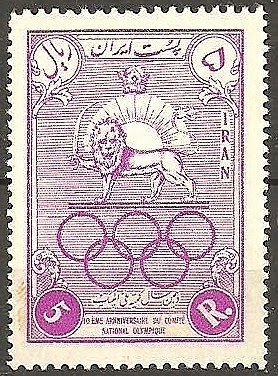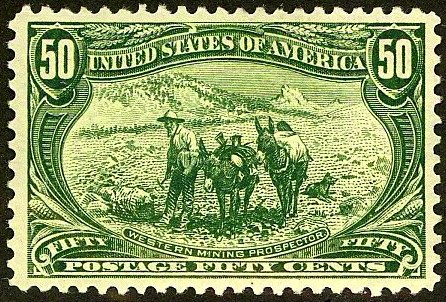 While economic factors play a crucial role in determining the size of a country's stamp collecting population, a less quantifiable but nevertheless significant set of influences involve its cultural values.
While economic factors play a crucial role in determining the size of a country's stamp collecting population, a less quantifiable but nevertheless significant set of influences involve its cultural values.For over a century after the first postage stamp was issued, the stamp market was centered in Europe (especially Germany), followed by the United States. Japan became the first Asian nation to develop a significant stamp collecting market, largely due to its miraculous economic progress following its defeat in World War II. Over the last 30 years, China has superseded Europe, the U.S., and Japan as the principal philatelic market, and other East Asian nations (the so-called Asian Tigers) have also developed significant markets.
Clearly, much of this transformation is due to the growth of the middle class in these rapidly developing nations, where once no middle class existed and most of the wealth and power were in the hands of a tiny oligarchical elite. What is less obvious is to what extent culture has played a role in determining the degree and nature of that transformation. Does the growth of a country's middle class always signal a proportionate growth in the number of its stamp collectors, or do other less measurable factors come into play?
In other words, do countries with similar economic growth but different cultural values develop proportionately similar stamp collecting populations based upon the growth of their middle classes? If not, then how do these values promote or diminish interest in the hobby?
These are important questions to consider if one is attempting to predict demand for a country's stamps. Before addressing them, I wish to state that I am in no way claiming that any one cultural, religious, or ethnic group is better than any other. Neither am I assuming that cultural values are static, or impervious to economic or other influences.
The ostensibly cultural determinant is particularly striking when comparing the stamp market of two affluent nations: the U.S. and Germany. As noted in an earlier article, it is very difficult to estimate the number of "serious stamp collectors" in a country. For the most part, only the population of serious collectors (however broadly characterized) is of interest from a philatelic investment perspective, because non-serious or beginning collectors tend to be less committed to the hobby, and tend to focus on common, inexpensive material. Based completely on experience, a few shreds of evidence, and hearsay, I would guess that there are no more than 250,000 serious philatelists in the U.S. (perhaps .07% of the population) vs. .5 million to 1 million in Germany (.6% to 1.25%).
Why is this so? However it is defined, the middle class is not 8 to 14 times larger as a proportion of the population in Germany than it is in the U.S.. Why are Germans, on the whole, 8 to 14 times more interested in stamps than Americans?
As yet, there has been no research done on the sociology of stamp collecting. We have no clue as to whether, in the future, Koreans will be more interested in stamps than Vietnamese, whether Buddhists will be more interested than Muslims, etc..
In the last three decades, the stamp collecting cohort within the People's Republic of China has become the world's largest. 20 million of the world's 50-60 million stamp collectors are Chinese, and according to at least one article, all of them are "serious" collectors. I think it more likely that between 4 and 6 million Chinese are serious stamp collectors (about .3% - .5% of the population), which raises the question: why are Chinese 4 to 7 times more interested in stamps than Americans?
 While I've found nothing in the way of data suggesting an answer to this question, my instincts tell me that the answer relates to two variables.
While I've found nothing in the way of data suggesting an answer to this question, my instincts tell me that the answer relates to two variables.The first is how intellectuals are perceived by society. Since the Pioneer Era, there has existed in the U.S. a strong anti-intellectual tendency, coupled with a belief that intellectuals are odd, weak, or socially awkward, as well as arrogant and elitist. Collecting stamps is considered an esoteric pursuit of introverted intellectuals - a hobby for "geeks", "nerds", "eggheads", etc.. Perhaps countries in which intellectuals are accorded higher status (like Germany and China, for instance) tend to have a higher population of serious stamp collectors.
 The second relates to patriotism. Since most stamp collectors focus on the stamps of their countries, it stands to reason that where there is interest in the history and culture of a country, there will be a greater interest in its stamps. Countries in which the citizens tend to identify with tribal or ethnic groups, in which most of the population does not identify with the country as a nation, or in which most of the population has become disillusioned, will be less likely to collect. While patriotism is not dead in the U.S., it has certainly declined significantly over the last 50 years.
The second relates to patriotism. Since most stamp collectors focus on the stamps of their countries, it stands to reason that where there is interest in the history and culture of a country, there will be a greater interest in its stamps. Countries in which the citizens tend to identify with tribal or ethnic groups, in which most of the population does not identify with the country as a nation, or in which most of the population has become disillusioned, will be less likely to collect. While patriotism is not dead in the U.S., it has certainly declined significantly over the last 50 years.Obviously these are just hunches, and the actual factors which influence the popularity of stamp collecting in a particular country are far more subtle and complex.
Those interested in becoming part of an international community of stamp collectors, dealers, and investors are encouraged to join the "Stampselectors" group at Facebook. The group hosts lively discussions concerning stamp investment and practical aspects of collecting, and provides a useful venue for those who wish to buy, sell, or trade stamps.


























